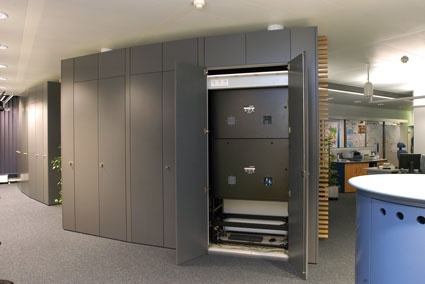Control Rooms: Space Saving or Image Quality?
When a company decides to invest in a new display system, the best and latest technologies are expected for an excellent visual result. The demand for new and possibly narrow disp...

When a company decides to invest in a new display system, the best and latest technologies are expected for an excellent visual result.
The demand for new and possibly narrow display cubes for the building of a video wall is growing. A new cube is not only wanted as narrow as possible, but also is it to be better for the environment and of course cheaper than the traditional cubes. But at what expense can this be made possible? Are these expected advantages really as good and are the cubes as good as larger, traditional ones? Which technology is actually the better one: the traditional devices or the new narrow displays?
Necessary to Know
In order to understand the difference of the two systems it is necessary to know the assembling of the cubes. Traditional rear projection cubes have their projector inside of the body which projects vertically to the top. The pictures of this projector reflect in just one mirror, which is installed in the upper part of the body, in an angle of 45° and is then projected from behind on the front pane of the cube. The narrow cubes, opposing to the traditional ones, have two mirrors instead of just one. This means that the picture itself is mirrored twice, which is called a Z-projection. In order to keep the body of the cube as narrow as possible the focal length is reduced, which leads to a decrease of the final image quality. The advantage of the Z-projection and this buildup is primarily a physically narrower body. But it also means that the light scattering is wider, in order to fill out the same frame size with less distance.
By that, a part of the light is lost on the way, which is more than with just one protection, so the narrow cubes are not as bright as the traditional ones. This configuration has the light in the middle of the front pane cover a shorter distance and has therefore a much higher intensity than the light of the image in the outer parts of the projection. In the middle of the image, the light enters the front pane from behind in an angle of 90°, but the other parts of the image meet the front pane in other, worse angles.
Narrow Cubes Not the Better Option
This causes the image to appear much brighter and clearer in the middle than in the outer parts. So when it comes to image quality, the narrow body cubes are definitely not the better option. But as the cubes were designed in order to built a video wall in larger groups of cubes, the unevenness of the projection in every single cube leads to non-uniformity in the whole installation. It might happen that there is a loss of image quality of the buildup due to the irregular brightness in single cubes.
In conclusion, the image quality of the Z-projection cubes is not as fine as the projection of the traditional cubes with only one mirror inside. The new generation of cubes has been introduced as more environmental friendly, because they are smaller and lighter. Another argument of the producers of the cubes was the lighter weight due to the Z-projection system, which will lead to a reduction of fuel needed for the transport. But the different of weight between the new and the traditional product is not that much to account for this argument.
What Is More Important
So this leads us to the question whether a minimal decrease of resources is more important than the image quality of the video wall in a control room? There are many ways to act environmental friendly, but risking the reliability in your control center should not be one of them. The third argument that is intended to advocate the new generation of cubes is that their smaller size means that they need less space in a control room, which is very important with today‘s real estate prices. This actually is an important factor, as space available should always be used reasonable. But it is not an argument for the cubes, as it leads to a misunderstanding and confusion. The product‘s data sheets say that the new cubes need an installation depth of 450 mm, which is less than the approximately 600 mm of traditional cubes. But in addition to that, there is the vague number for distance between cube and the wall behind it. This space is necessary, as the narrow cubes need an add-on in their back to place the projectors in position, as well as some additional space for ventilation. Traditional cubes do not need both of that.
The additional space needed for the Z-projection cubes adds up to 595 mm of distance needed from the wall of the room to the front pane of the cube. This is not at all a significant difference from the 600 mm of the space a traditional cube installation needs, especially not if you keep in mind that there is a visible cut back in the image quality because of the narrow design.
What Accounts and What Does Not
The less space that the smaller cubes need does not actually account, because there is more space needed for routine maintenance. Most of the video wall installations are using a system of being accessible from behind, because a technician needs some space to work. The assumed benefits of the new, narrow cubes do not justify their high costs. The reduction of image quality and the difference in size, which does not mean a reduction of space needed, combined with their weaker frames which make them prone to vibration irritations, lead to the final conclusion that the new cubes are not as good as they sound at first. Until there is really a major invention, which leads to an improvement of the image quality and a smaller price, we will stick to the traditional system as the one and only solution.













